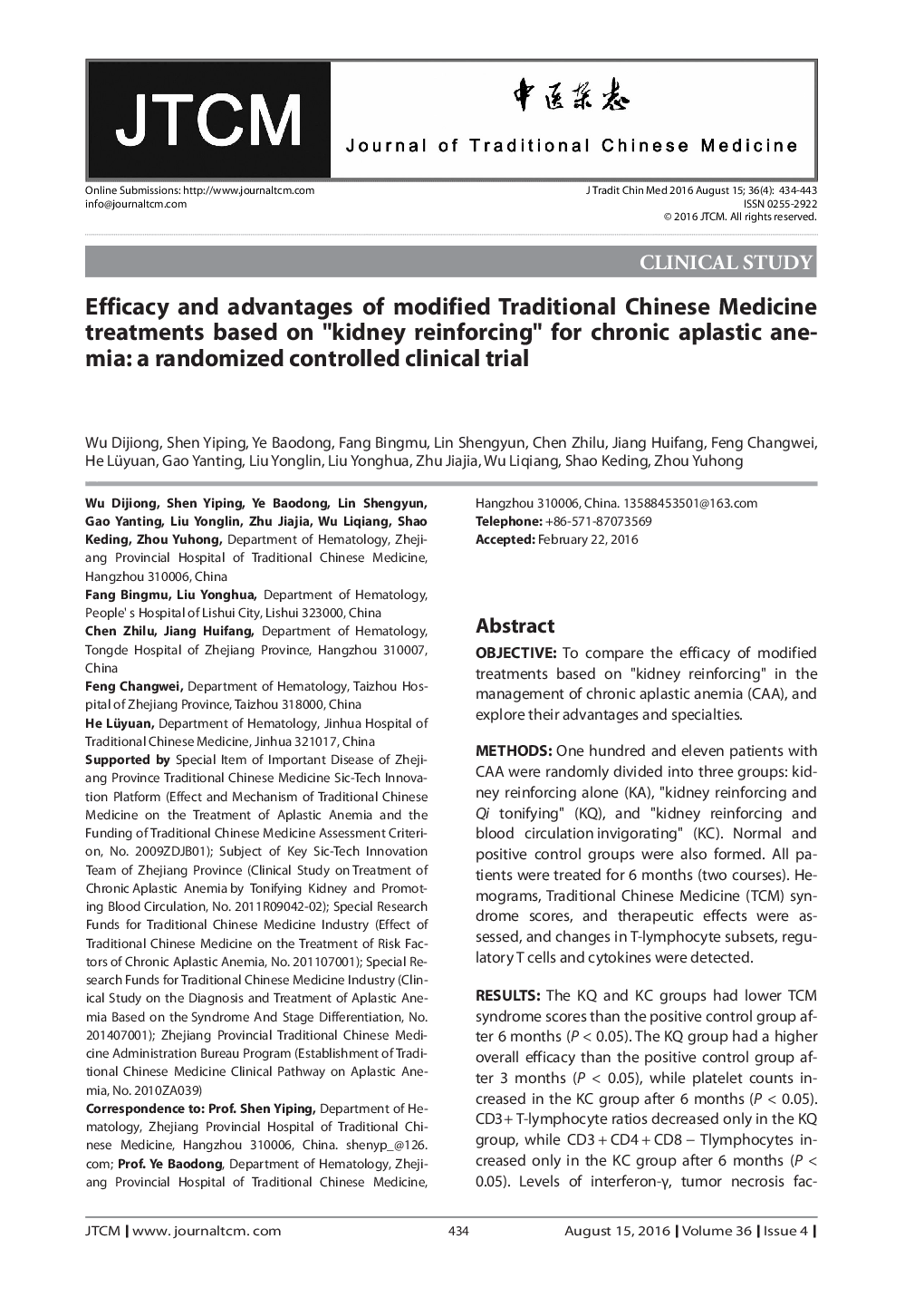| Article ID | Journal | Published Year | Pages | File Type |
|---|---|---|---|---|
| 4200904 | Journal of Traditional Chinese Medicine | 2016 | 10 Pages |
ObjectiveTo compare the efficacy of modified treatments based on “kidney reinforcing” in the management of chronic aplastic anemia (CAA), and explore their advantages and specialties.MethodsOne hundred and eleven patients with CAA were randomly divided into three groups: kidney reinforcing alone (KA), “kidney reinforcing and Qi tonifying” (KQ), and “kidney reinforcing and blood circulation invigorating” (KC). Normal and positive control groups were also formed. All patients were treated for 6 months (two courses). Hemograms, Traditional Chinese Medicine (TCM) syndrome scores, and therapeutic effects were assessed, and changes in T-lymphocyte subsets, regulatory T cells and cytokines were detected.ResultsThe KQ and KC groups had lower TCM syndrome scores than the positive control group after 6 months (P < 0.05). The KQ group had a higher overall efficacy than the positive control group after 3 months (P < 0.05), while platelet counts increased in the KC group after 6 months (P < 0.05). CD3+T-lymphocyte ratios decreased only in the KQ group, while CD3 + CD4+ CD8− Tlymphocytes increased only in the KC group after 6 months (P < 0.05). Levels of interferon-γ, tumor necrosis factor-α, interleukin (IL)-2 and IL-6 decreased and levels of IL-4 and IL-10 increased in all treated groups after 6 months. Levels of IL-6 in the KQ and KC groups were lower than those in the positive control group (P < 0.05).ConclusionTreatments based on kidney reinforcing have a rebalancing effect on cytotoxic and T helper cells, and regulate expression of interferon-γ, IL-2, IL-6 and IL-4. KQ may be more effective in treating CAA, and KC may have an advantage in platelet recovery.
